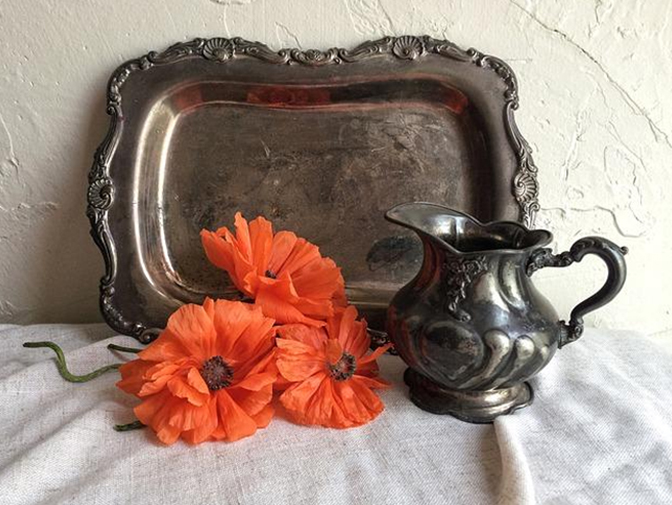Metals are the most rigid materials on the planet. They provide a framework for buildings and make up heavy industrial machines. Many of your home and office equipment consist of metals, too. But like everything else, they have their kryptonite. They corrode when exposed to the atmosphere, certain chemicals, or other metals.
It’s important to note that metals corrode in different ways. They differ in how they react with the substances that they come in contact with. Oxygen is by far the most common catalyst for corrosion. It affects most metals both in liquid and gas form, which is why corrosion is sometimes referred to as oxidation.
Tarnish vs. Rust
As mentioned, metals differently corrode when exposed to the same element or compound. We can classify metals into two types—ferrous (iron-containing) and nonferrous (non-iron-containing). The presence or absence of iron in a metal’s composition significantly affects its corrosion.
Ferrous metals corrode by transforming into iron oxide or rust, while nonferrous metals corrode by developing a layer of oxide on its surface. This layer of oxide is also called tarnish.
Unlike rust, tarnish stays on the surface of nonferrous metals. It doesn’t spread into the metal and wreck the metal’s properties. Instead, it continues to grow on the surface as it gets further exposed to the atmosphere. In other words, unlike rust, you can scrape or polish away the layer of developed tarnish on the surface of a nonferrous metal without diminishing its quality.
Everyday Metals That Tarnish
Before I teach you the best way to clean tarnished metal, let’s first identify some nonferrous metals around us. Let’s get the popular and rare ones—gold, silver, and platinum—out of the way and focus on the more common.
Copper, brass, bronze, aluminum, zinc, and tin are the most common among all the nonferrous metals. Not only are these metals abundant in supply, but they also display qualities that are valuable to a vast range of applications. Big industries, such as construction, telecommunication, electronics, and transportation, rely on their production.
Tarnish isn’t that much of a big industry problem because the metals are often used for their mechanical properties. But for industries that rely on the metals’ appearance, such as jewelry and furniture making, it can be rather pesky. Maintaining the lustrous appearance of these metals takes effort.
Some metals tarnish faster than others. For instance, copper can lose its sheen just a few hours after exposure to air or water. The same goes true for its primary alloys—bronze and brass. If neglected, the tarnish can grow and change copper’s color. This new layer of material that has a different color is generally referred to as patina.
Patina changes color as it develops. You can tell how long copper has been exposed by the color of its patina. However, various factors may affect how the process ends. Depending on what chemical copper is exposed to, it may form a brown, blue, or green patina.
How to Clean Tarnished Metal
Tarnishing is inevitable for metals like copper, brass, and bronze. The good news is you can fix it. As explained earlier, tarnish is just on the metal‘s surface so that you can wipe it away. But it doesn’t come off quickly like typical dust or grime. You may need to apply a polishing agent. Here’s a simple procedure for removing tarnish from metal you can follow.
-
- Check if the item you will be polishing is pure copper, brass, or bronze. Some furniture pieces only have one of these metals on their surface and underneath them is an entirely different material. This will give you an idea of the safest technique for cleaning tarnished metal. The last thing you want is to buff away the outermost layer along with the tarnish and reveal the underlying metal.
- Decide whether to use commercial polish or a homemade one. The material and tools you need for the process will depend on your decision.
- Prepare the things you need. If you are using a commercial polish, all you need is a clean cloth, and the polish. But if you are using homemade metal polish, there’s a handful of ingredients you need to prepare.It’s important to note that you can combine many products in your home to make a concoction that works on tarnish. In this procedure, we will focus on the most common ones – vinegar, flour, salt, lemon juice, baking soda, and ketchup. You won’t be mixing all of them, but you can make different polishing agents by creating different combinations.For instance, you can mix vinegar, flour, and salt to produce a metal polish paste. Or you can mix lemon juice and baking soda. Ketchup, on the other hand, may serve as a metal polish without mixing with anything.
You also need to prepare a clean, dry cloth.
- When you finish preparing your concoction, it’s time to prepare your metal item. Wash it thoroughly until its surface is free of dust or grime. Tiny dust particles have sharp edges that can scratch your metal as you rub it with the cloth.
- Apply the metal polish you prepared on the metal item’s surface and let it sit for several minutes.
- Buff the surface of the metal piece with the clean cloth until the metal’s original sheen appears. Remember not to wet the fabric with water because water, containing oxygen, is among the substances that can trigger tarnishing.
Sometimes, the metal’s quality affects the rate by which tarnish forms. For instance, low-quality or unrefined brass or bronze may tarnish faster because it may contain other elements that are more reactive to oxygen than the primary metal. If you are working with a non-ferrous metal, such as copper, brass, or bronze, make sure to obtain your supply from trusted sheet metal suppliers, like Rotax Metals. This way, you can create outputs that can maintain their quality longer and require minimal maintenance.


